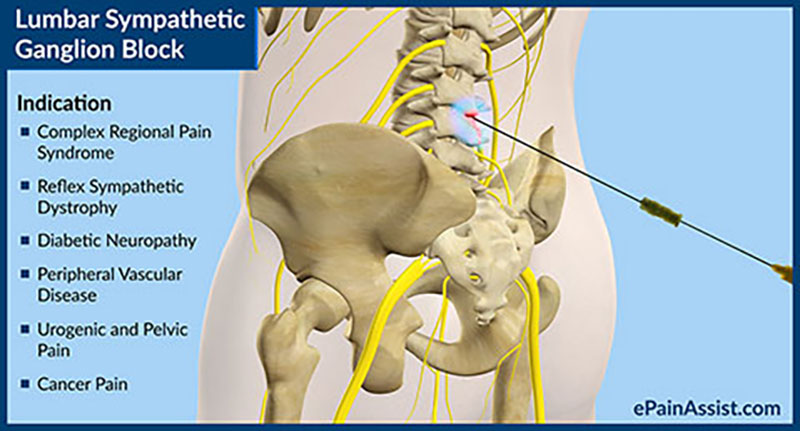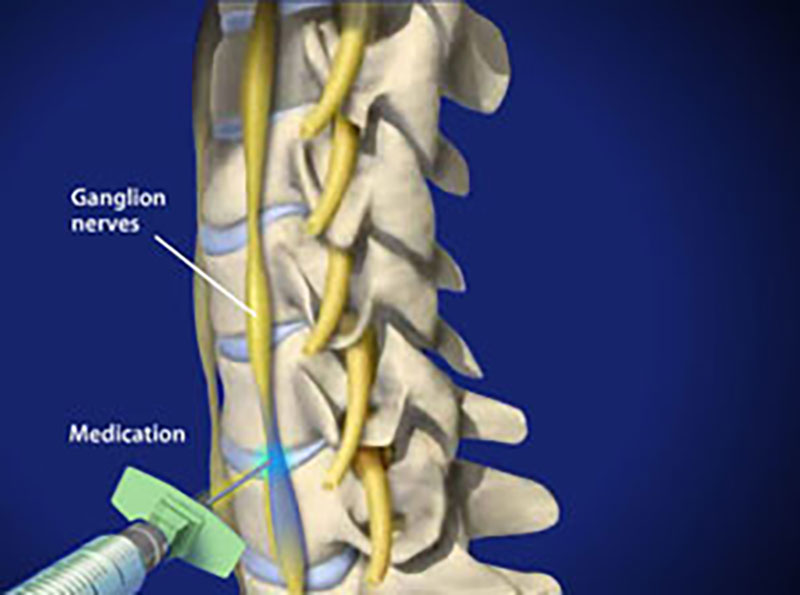SYMPATHETIC NERVE BLOCKS
Some patients suffer from “sympathetically maintained pain”, in which the body’s sympathetic nervous system perpetuates extreme pain disproportionate to initial injury, with associated swelling and changes to skin, hair and nails on the affected limb. One diagnosis in this category is complex regional pain syndrome, CRPS, previously known as reflex sympathetic dystrophy.
- When CRPS occurs in the upper extremity, it can be treated with a stellate ganglion block, in which corticosteroid and/or local anesthetic is injected adjacent to the sympathetic nerves in the neck. The goals of the procedure are to confirm the diagnosis of CRPS, decrease pain, improve blood flow to the affected limb, and/or facilitate patient participation in physical therapy. Side effects may include soreness in the neck where the needle was placed. As well, eyelid droopiness, stuffy nose and difficulty swallowing may occur, as temporary side effects of the sympathetic nerve block.
- For the lower extremity, a lumbar sympathetic nerve block is performed by injecting corticosteroid and/or local anesthetic near the sympathetic nerves located on either side of the lumbar spine, in order to relieve leg pain caused by complex regional pain syndrome. After the procedure, the affected leg should become warm, which is a sign of the “sympathetic block” taking effect. The most common side effect of this procedure is temporary back pain and transient lower extremity numbness and weakness.
- If you are taking a blood thinner, please call your primary care physician or cardiologist and ask if it is safe to stop the medication. They will instruct you on how to stop it when it is time for your injection. This will decrease the likelihood of bleeding complications.


